2016 Toyota Prius: Car Seat Check

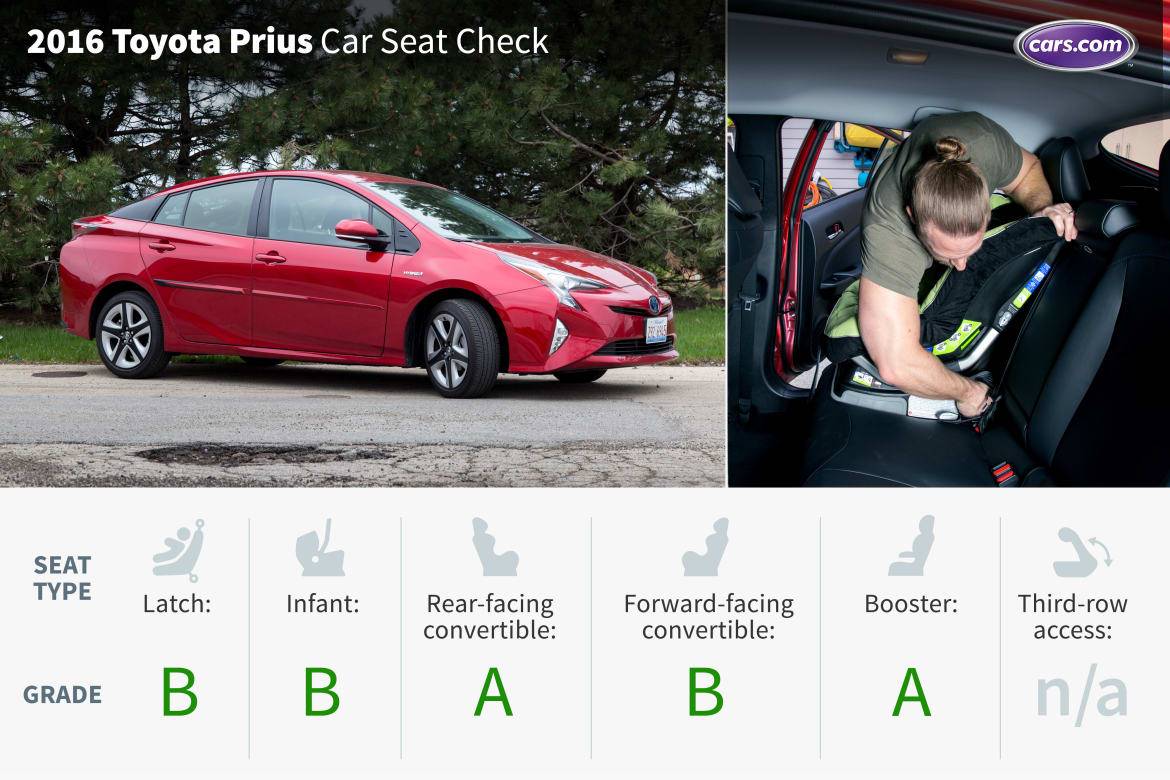
CARS.COM — Along with eye-popping new styling and increased fuel economy, the 2016 Toyota Prius got wider and longer for its model-year 2016 redesign. Although front legroom and cargo room are up this year, rear legroom is down by almost 3 inches compared with the 2015 Prius. However, the new Prius’s backseat still easily accommodated two child-safety seats in our Car Seat Check, though it lost some points for deeply-set top tether anchors.
How many car seats fit in the second row? Two
What We Like
- The two sets of Latch anchors were easy to access behind Velcro flaps.
- In rear-facing mode, we had no issues installing the convertible, and the front passenger had ample legroom.
- After removing the head restraint, the convertible in forward mode fit well.
- After removing the head restraint, the booster fit well. The seat belt buckles are on stable bases, which should make them easier for kids to grasp.
What We Don’t
- Although the infant seat installed without incident, we had to move front passenger seat up to accommodate it, slightly impeding our 5-foot-6 tester’s legroom.
- The three top tether anchors are clearly marked, but the anchors are set deeply within slits in the upholstery, complicating connection with the forward-facing convertible.
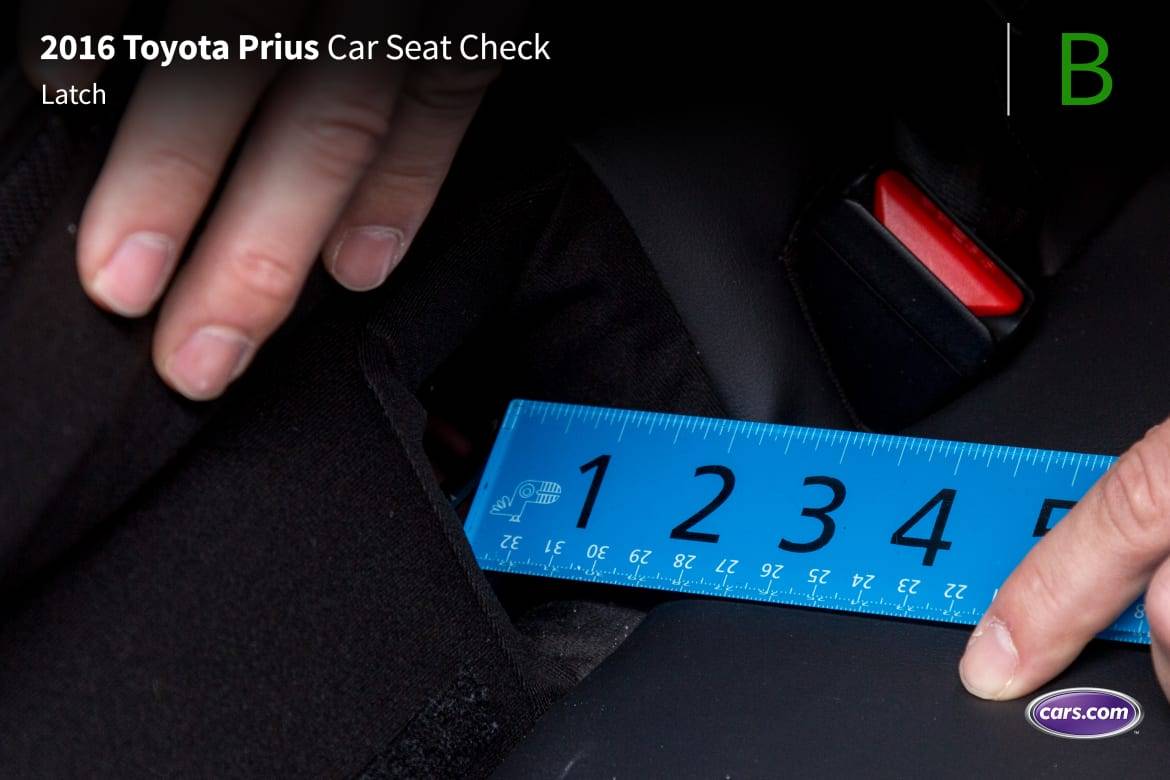
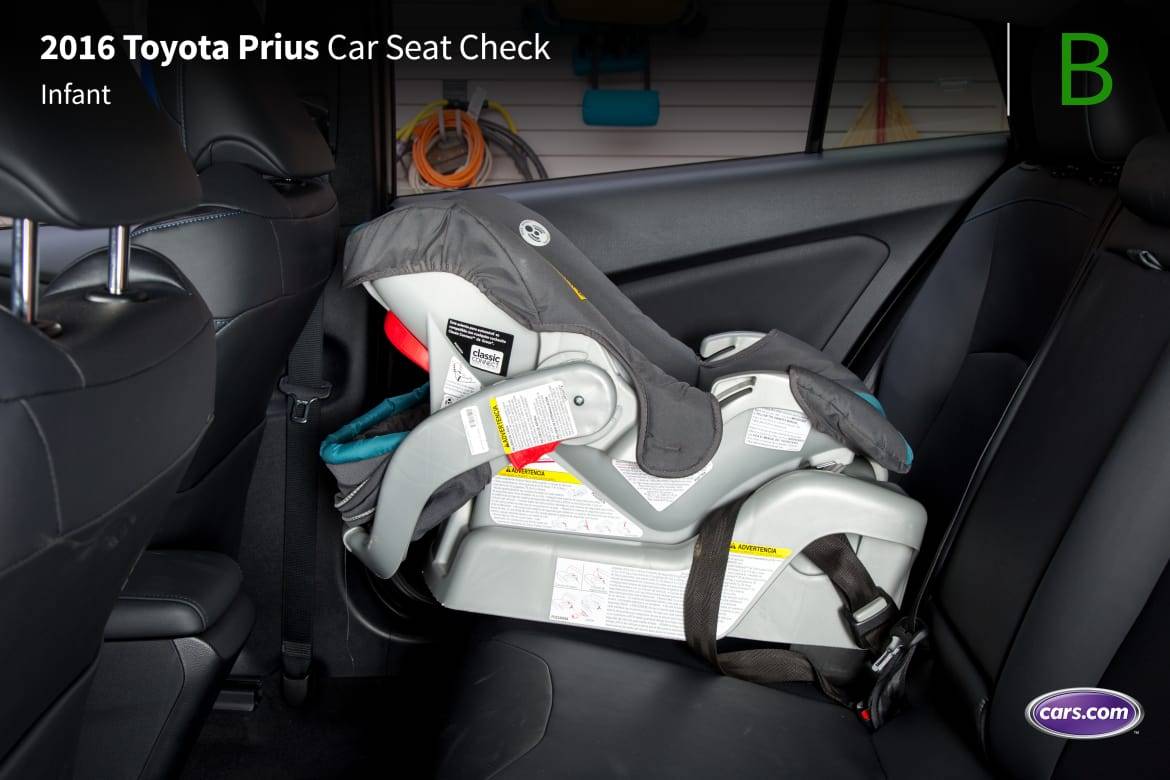
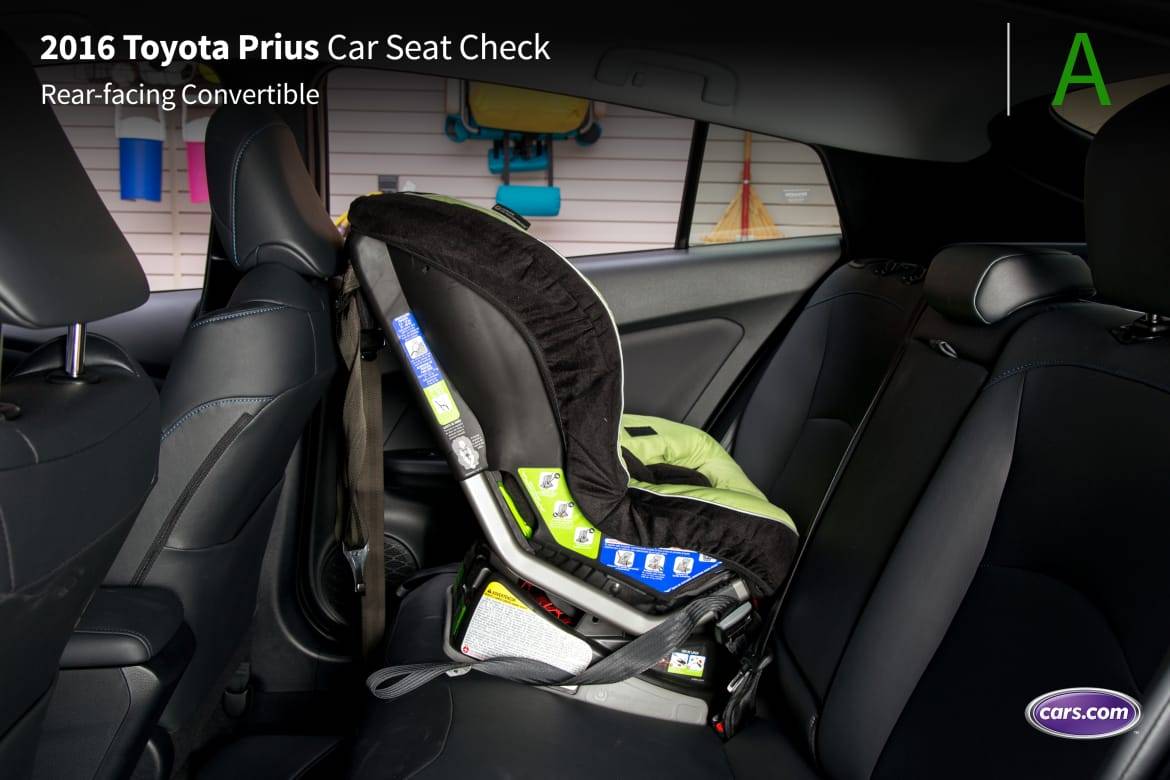
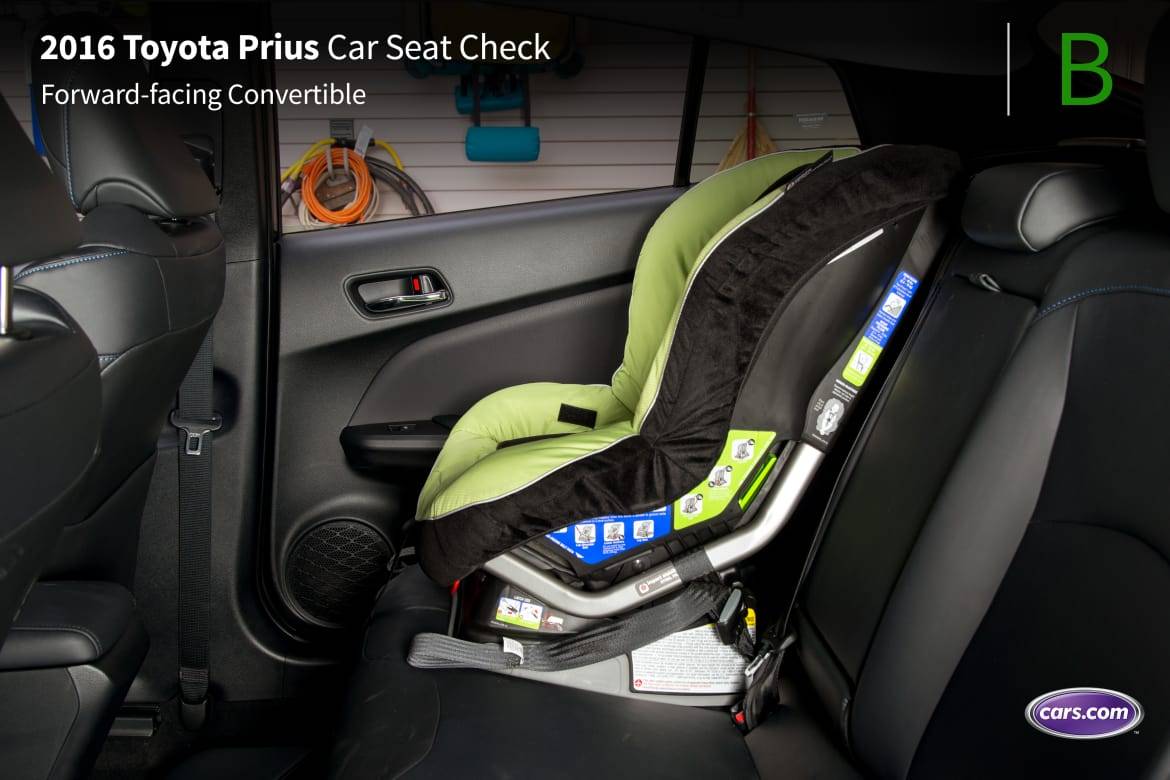
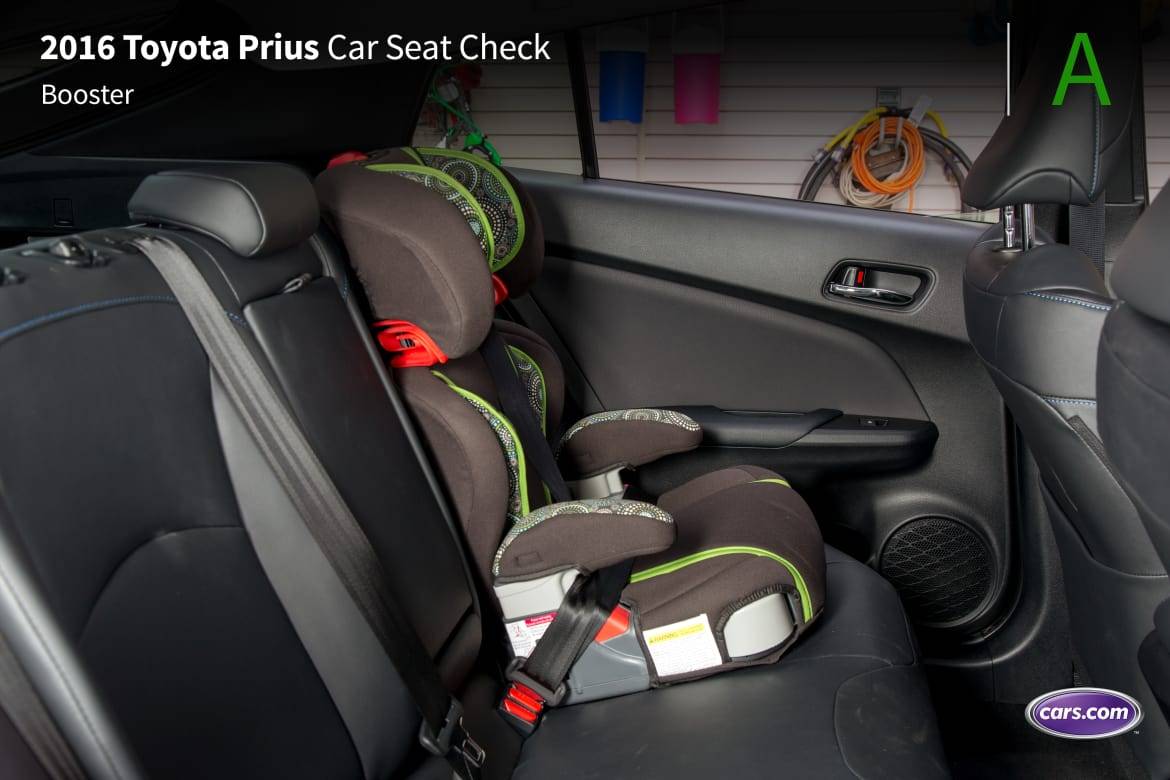







Grading Scale
A: Plenty of room for the car seat and the child; doesn’t impact driver or front-passenger legroom. Easy to find and connect to Latch and tether anchors. No fit issues involving head restraint or seat contouring. Easy access to the third row.
B: Plenty of room. One fit or connection issue. Some problems accessing third row when available.
C: Marginal room. Two fit or connection issues. Difficult to access third row when available.
D: Insufficient room. Two or more fit or connection issues.
F: Does not fit or is unsafe.
About Cars.com’s Car Seat Checks
Editors Jennifer Geiger, Jennifer Newman and Matt Schmitz are certified child safety seat installation technicians.
For the Car Seat Check, we use a Graco SnugRide Classic Connect 30 infant-safety seat, a Britax Marathon convertible seat and Graco TurboBooster seat. The front seats are adjusted for a 6-foot driver and a shorter passenger. The three child seats are installed in the second row. The booster seat sits behind the driver’s seat, and the infant and convertible seats are installed behind the front passenger seat.
We also install the forward-facing convertible in the second row’s middle seat with the booster and infant seat in the outboard seats to see if three car seats will fit; a child sitting in the booster seat must be able to reach the seat belt buckle. If there’s a third row, we install the booster seat and a forward-facing convertible. To learn more about how we conduct our Car Seat Checks, go here.
Parents should also remember that they can use the Latch system or a seat belt to install a car seat, and that Latch anchors have a weight limit of 65 pounds, including the weight of the child and the weight of the seat itself.

News Editor Jennifer Geiger joined the automotive industry in 2003, much to the delight of her Corvette-obsessed dad. Jennifer is an expert reviewer, certified car-seat technician and mom of three. She wears a lot of hats — many of them while driving a minivan.
Featured stories










